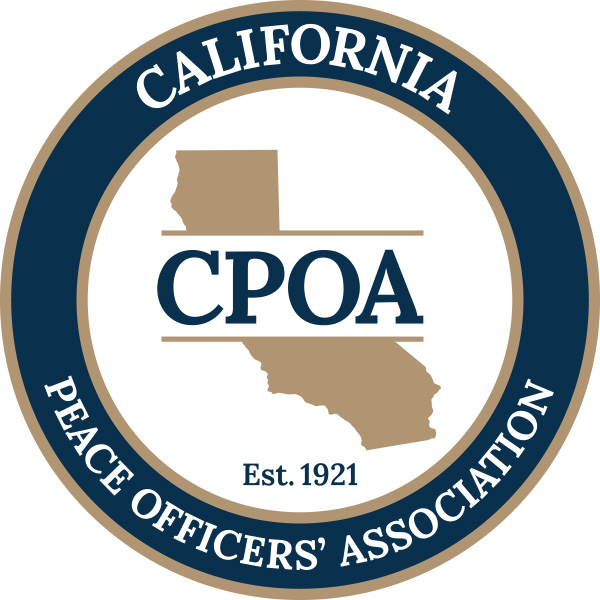Provided by CPOA Legal Counsel James R. Touchstone, Esq., Jones & Mayer
In a 6-3 decision on April 27, 2020, the United States Supreme Court in N.Y. State Rifle & Pistol Ass’n v. City of N.Y.[1] dismissed as moot a claim for relief alleging that a New York City (“City”) rule violated the plaintiffs’ Second Amendment rights. In a relatively concise opinion, the Court majority concluded that, after the Court had granted certiorari, subsequent changes to the City’s rule and New York state law provided the “precise relief” required.
In its more expansive opinion, the dissent determined that the majority incorrectly dismissed the case as moot. Turning to the merits, the dissent maintained that the original City rule violated the Second Amendment by burdening the same core Second Amendment right that the Court had recognized in District of Columbia v. Heller, 554 U. S. 570 (2008).
Background[2]
In 2013, three individuals and one organization representing New York gun owners (collectively, “Petitioners”) brought suit under 42 U.S.C. section 1983 against New York City (“City”) and the License Division of the New York City Police Department (“NYPD”). The petitioners claimed that a City rule restricting the transport of firearms (38 N. Y. C. R. R. section 5-23 (“Section 5-23”)) violated the Second Amendment. They sought declaratory and injunctive relief against enforcement of Section 5-23, insofar as the rule prevented their transport of firearms to a second home or shooting range outside of the City.
The ordinance that the individuals challenged was adopted in 2001. Before then, the NYPD issued both premises licenses, which allowed licensees to keep the registered handgun at a home or business, and so-called “target licenses,” which allowed licensees to transport their handguns to specified, preapproved ranges outside of the City. Target licenses were eliminated in 2001, and premises licensees could practice with their guns only if they traveled “directly to and from an authorized small arms range/shooting club,” among other restrictions. Section 5-23(a)(3) (in effect prior to July 21, 2019) (emphasis added). The only “authorized” ranges or clubs were seven ranges located in New York City.
Each individual stated that he regularly traveled outside the City to ranges and shooting competitions before learning of the restriction imposed by Section 5-23. Petitioners’ amended complaint maintained that the Second Amendment requires “unrestricted access to gun ranges and shooting events in order to practice and perfect safe gun handling skills.” The amended complaint’s prayer for relief sought an injunction against enforcement of the travel restriction, as well as attorney’s fees, costs of suit, declaratory relief . . . and “[a]ny such further relief as the [c]ourt deems just and proper.”
The City argued that the rule was lawful because travel restrictions were “necessary to protect the public safety insofar as the transport of firearms outside the home potentially endangers the public.”
The District Court denied petitioners’ motions for preliminary injunction and summary judgment and granted the City’s cross-motion for summary judgment. The District Court deemed any burden on petitioners’ Second Amendment right “minimal or, at most, modest.” The Second Circuit Court of Appeals affirmed, characterizing the ordinance’s burdens on petitioners’ Second Amendment right as “trivial.”
The Supreme Court granted certiorari in January 2019. The City subsequently amended their rule so that holders of premises licenses were allowed to transport firearms to a second home or shooting range outside of the City, provided that the licensees traveled “directly” between their residences and the permitted destinations. The State of New York amended its firearm licensing statute, abrogating any local law, rule, or regulation that prevented the holder of a premises license from transporting a licensed handgun “directly to or from” an authorized range, competition, or second home.
Petitioners argued that the new rule might still infringe their rights because they may not be allowed to stop for coffee, gas, food, or restroom breaks on the way to their second homes or shooting ranges outside of the city. The City countered that such routine stops were entirely permissible under the new rule.
The Supreme Court did not engage in the dispute about the City’s new rule, however. The Court instead found that the City’s changes to the rule provided the “precise relief that petitioners requested in the prayer for relief in their complaint,” and concluded that Petitioners’ claim for declaratory and injunctive relief with respect to the City’s old rule was therefore moot.
Citing Lewis v. Continental Bank Corp.,[3] the Court explained its disposition: “Our ordinary practice in disposing of a case that has become moot on appeal is to vacate the judgment with directions to dismiss. [Internal citations omitted.] However, in instances where the mootness is attributable to a change in the legal framework governing the case, and where the plaintiff may have some residual claim under the new framework that was understandably not asserted previously, our practice is to vacate the judgment and remand for further proceedings in which the parties may, if necessary, amend their pleadings or develop the record more fully. See Diffenderfer v. Central Baptist Church of Miami, Inc., 404 U. S. 412, 415, 92 S. Ct. 574, 30 L. Ed. 2d 567 (1972).” Accordingly, the Supreme Court vacated the judgment of the Second Circuit Court of Appeals.
The Court also remanded for further proceedings as appropriate. Prior to the Court’s disposition, Petitioners had argued that they could still ask for damages with respect to the City’s old rule in the instant case before the Court. The Court noted that Petitioners did not seek damages in their complaint; in fact, the possibility of a damages claim was not raised until well into the litigation in the current case before the Court. The Supreme Court explained that on remand, the Court of Appeals and the District Court could consider whether petitioners could still add a claim for damages in this lawsuit with respect to the City’s old rule.
Justice Kavanaugh concurred with the majority that the petitioners’ claim against the old rule was moot and that their new claims should be addressed on remand by the Court of Appeals and District Courts. However, he also shared the concern expressed by the dissenting opinion that some federal and state courts may not be properly applying Heller and McDonald v. Chicago, 561 U. S. 742 (2010). Justice Kavanaugh referred to the several Second Amendment cases with petitions for certiorari pending before the Court as potential paths to address this concern.
The Dissent
Justice Alito, joined by Justice Gorsuch and Justice Thomas,[4] dissented. The dissent maintained that the case was not moot, explaining that “‘a case “becomes moot only when it is impossible for a court to grant any effectual relief whatever to the prevailing party.”’ Chafin v. Chafin, 568 U. S. 165, 172 (2013) (emphasis added). ‘“As long as the parties have a concrete interest, however small, in the outcome of the litigation, the case is not moot.”’ Ibid. (emphasis added).”
In the dissent’s view, the amended City ordinance and the new State law gave petitioners most of what they sought in their complaint, but the new laws did not give them complete relief. The dissent said it was entirely possible for petitioners to obtain more relief, and therefore the case was not moot. The dissent observed that Petitioners had asserted in their complaint that the Second Amendment guaranteed them, as holders of premises licenses, “unrestricted access” to ranges, competitions, and second homes outside of New York City, but the dissent stated that the new laws did not provide them that result.
Moreover, the dissent maintained that had the Supreme Court held that the old City rule violated the petitioners’ Second Amendment right, the District Court on remand could award damages.[5] It followed that because it was not “impossible for a court to grant any effectual relief whatever” to petitioners in the form of damages, the case was not moot.[6] The dissent added that a challenge to an allegedly unconstitutional law does not become moot with the enactment of new legislation that reduces but does not eliminate the injury originally alleged.
Having determined the case was not moot, the dissent next addressed the merits of the claim.
Dissent’s Discussion of the Merits of the Claim
Characterizing it as “not a close question,” the dissent determined that the old City rule violated the Second Amendment. The dissent stated that its conclusion followed directly from the Supreme Court’s decision in District of Columbia v. Heller, which held that the Second Amendment protects the right of ordinary Americans to keep and bear arms. Two years later, the Supreme Court’s decision in McDonald v. Chicago established that this right was fully applicable to the states.
Expanding on Heller, the dissent explained that Court there had held that a District of Columbia rule that effectively prevented a law-abiding citizen from keeping a handgun in the home for purposes of self-defense constituted a core violation of the Second Amendment.[7] Heller based this decision on the scope of the right to keep and bear arms as it was understood at the time of the adoption of the Second Amendment.[8] Heller recognized that history supported the constitutionality of some laws limiting the right to possess a firearm, such as laws banning firearms from certain sensitive locations and prohibiting possession by felons and other dangerous individuals. See id., at 626-627; see also McDonald, 561 U. S., at 787, 904. However, history provided no support for laws like the District of Columbia’s rule. See 554 U. S., at 629-634.
The dissent declared that the same core Second Amendment right was at issue in the instant case, the right to keep a handgun in the home for self-defense. The dissent explained that a necessary concomitant of this right was the right to take a gun outside the home for certain purposes, such as for maintenance or repair, or to transfer ownership lawfully, which City law allowed. Another corresponding purpose, the dissent explained, was to take a gun to a range in order to gain and maintain the skill necessary to use it responsibly. As Heller expressed, “‘to bear arms implies something more than the mere keeping [of arms]; it implies the learning to handle and use them in a way that makes those who keep them ready for their efficient use.’” 554 U. S., at 617-618 (quoting T. Cooley, Constitutional Law 271 (1880)); see also Luis v. United States, 578 U. S. ___, ___, 136 S. Ct. 1083, 194 L. Ed. 2d 256, 272 (2016) (Thomas, J., concurring in judgment) (“The right to keep and bear arms . . . ‘implies a corresponding right . . . to acquire and maintain proficiency in their use’”); Ezell v. Chicago, 651 F. 3d 684, 704 (CA7 2011) (“[T]he core right wouldn’t mean much without the training and practice that make it effective”).
The dissent observed that although a lawful gun owner can sometimes practice at a range using a gun that is owned by and rented at the range, the same model gun that the person owned might not be available at a range. Moreover, each individual gun might have its own characteristics.
Having decided that the right at issue here was related to the same right recognized in Heller, the dissent stated that the City would need to justify the restrictions its rule imposed. However, the City offered no such justifications, such as evidence of laws in force around the time of the adoption of the Second Amendment that prevented gun owners from practicing outside City limits.
The City argued that municipalities restricted the places within their jurisdiction where a gun could be fired, noting that the Second Amendment surely did not mean that a New York City resident with a premises license was allowed to practice in Central Park or Times Square. The dissent rejected this argument as inapposite here because Petitioners had not claimed the right to fire weapons in public places within the City. Instead, they claimed they had a right to practice at ranges and competitions outside the City, and there had been no showing by the City, or the courts below, that had demonstrated that municipalities during the founding era prevented gun owners from taking their guns outside city limits for practice.
Beyond the absence of historical support, the dissent stated that the weakness of the City’s showing that its travel restriction significantly promoted public safety left no doubt that the New York City ordinance was unconstitutional. The City relied heavily on statements by the commanding officer of the NYPD License Division. The dissent decided these statements were not persuasive and irrelevant to the justification for drawing a distinction between trips to a range in the City and trips to a range in a neighboring jurisdiction.
In sum, the dissent determined that the City’s travel restriction burdened the core right recognized in Heller. History provided no support for such a restriction, nor did the City’s weak and unsubstantiated public safety arguments. Because the dissent concluded that the case was not moot, and that the City’s rule was unconstitutional, the dissent would have reversed and remanded the case to the District Court to provide appropriate relief. The dissent also expressed concern that the treatment of Heller by the lower courts in this case was typical of how lower courts had treated Heller in other cases. Justice Kavanaugh expressed in his concurrence that he shared this concern.
HOW THIS AFFECTS YOUR AGENCY
As the dissent noted, since McDonald, the lower courts have decided many cases involving Second Amendment challenges to a variety of federal, state, and local laws. Many of these cases have failed. The Supreme Court has been asked to review many such cases, but the Court had denied the vast majority of such requests. Agencies should note that, as Justice Kavanaugh mentioned, several Second Amendment cases with petitions for certiorari are pending before the Court. Accordingly, it can be anticipated that the Court may accept an appropriate case to address Heller’s treatment by lower federal courts and state courts.
As always, if you wish to discuss this matter in greater detail, please feel free to contact me at (714) 446–1400 or via email at jrt@jones-mayer.com.
Information on www.jones-mayer.com is for general use and is not legal advice. The mailing of this Client Alert Memorandum is not intended to create, and receipt of it does not constitute, an attorney-client-relationship.
[1] 2020 U.S. LEXIS 2528 (U.S. Apr. 27, 2020).
[2] The facts are taken largely from the dissent’s more expansive text.
[3] 494 U. S. 472, 482-483 (1990).
[4] Justice Thomas did not join Part IV-B of the dissent.
[5] Section 1983 claims permit the recovery of damages.
[6] Chafin, supra, 568 U.S. at 172.
[7] 554 U. S., at 635.
[8] Id., at 577-605, 628-629.


